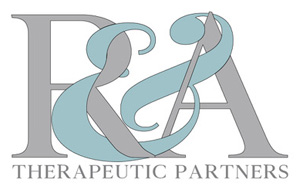The Relationship Between Anosognosia and Schizophrenia
Research suggests up to 60% of people with schizophrenia also have anosognosia – a condition in which a person lacks awareness or insight into their illness or disability. Unfortunately, an inability to accurately perceive and interpret the experience of having a severe mental illness prevents many people from seeking or maintaining treatment. This lack of awareness can lead to non-compliance with medication, exacerbating symptoms and increasing the likelihood of hospitalization. Early intervention and targeted therapeutic strategies are essential in helping individuals with schizophrenia and anosognosia manage their condition effectively.
Characteristics of Anosognosia
The ability to understand and address anosognosia is critical for psychiatrists, therapists, and other mental health professionals to provide effective care for people with schizophrenia and other severe mental illness. Failure to recognize psychosis symptoms like delusions or hallucinations can be a significant challenge, preventing someone from asking for help or adhering to a medication regimen.
Since anosognosia prevents people from acknowledging they have a mental illness that causes cognitive impairment, they might insist there is nothing wrong with them and refuse to accept the reality of their condition. Even though a person may routinely believe irrational, unproven things or see, hear, and feel things that are not there, they may still downplay or deny the presence of psychosis or other symptoms.
While anosognosia, psychosis, and schizophrenia can vary in severity, most people with these conditions lack the self-perception and insight to accept the need for significant support. They may be oblivious to the impact on their thoughts, behaviors, relationships, and daily function and unable to really understand their condition and why treatment is so important.
Addressing anosognosia requires a multifaceted approach that includes psychoeducation, therapeutic interventions, and family support. Educating patients and their families about the nature of anosognosia and its impact on treatment adherence can help create a supportive environment that encourages compliance. Additionally, compassionate communication techniques can foster trust and cooperation, making it easier to engage patients in their treatment plans and improve their overall prognosis.
What Causes Anosognosia?
Researchers have not pinpointed a specific cause of anosognosia, but professionals believe several factors can contribute to its development.
- Neurological: Damage or dysfunction in specific brain regions, such as the parietal lobe, can impair your ability to acknowledge your deficits. Likewise, disruptions in the neural circuits involved in self-awareness and reality monitoring can lead to anosognosia.
- Cognitive: Some degenerative conditions that impair memory, attention, and executive function can distort processing, making it difficult to perceive and integrate information about your well-being accurately.
- Psychological: Denial or defense mechanisms can also play a role, as you may subconsciously reject or minimize the reality of their illness to cope with the distress it causes.
How Do Professionals Diagnose and Treat Anosognosia?
A qualified health professional who has already diagnosed you with schizophrenia, psychosis, bipolar disorder, or other serious mental illness has reasons to screen for co-occurring anosognosia. Their evaluation may involve clinical interviews to evaluate your perception and attitudes about your symptoms and mental well-being. A thorough examination will also include examining your memory, attention, and executive function to identify neuropsychological impairments contributing to anosognosia and rule out other potential causes affecting your self-awareness.
Treating an individual suffering from anosognosia, schizophrenia, or another psychotic disorder can be challenging. However, health providers may prescribe a regimen of antipsychotic medication as a first-line treatment, combined with therapy, to address the denial and lack of insight associated with anosognosia.
Collaboration among your mental health and primary care providers ensures a comprehensive and coordinated treatment approach. The clinical team will continue encouraging the person suffering to take an active role in their care plan as their needs and symptoms evolve.
Schizophrenia and Psychosis Treatment
At R&A Therapeutic Partners, we provide compassionate psychotherapy and crisis and case management that emphasizes the importance of the therapeutic relationship and helping someone to develop the insight needed to engage in self-care. Ray Estefania and Ana Moreno use a combination of evidence-based techniques like cognitive behavioral therapy and other therapeutic approaches to help our clients develop more emotional resilience and healthier coping skills. We also provide interventions and therapeutic placement for families who may be concerned about someone who is suffering from severe and persistent mental illness. If you know someone struggling with schizophrenia, bipolar disorder, another psychotic disorder, or anosognosia, reach out to us today to request the help you need to start healing.
At R&A Therapeutic Partners Raymond Estefania and Ana Moreno specialize in substance use and mental health disorder evaluations, treatment, intervention and therapeutic/educational consulting for clients throughout the greater South Florida area, as well as nationally and internationally. For more resources and information please visit Therapeutic-Partners.com or on Facebook.

